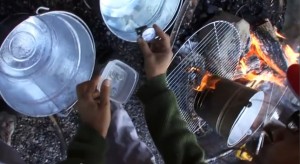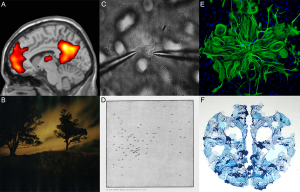From prams and washing machines to radios and vacuum cleaners, this display of items from the 1951 Festival of Britain is clearly domestically centred. Here, science and technology appear to impinge on almost every aspect of day-to-day British life with items for entertainment (games, fireworks and broadcasting technologies), beauty (hair styling and clothes tailoring), cleaning (washing machines and vacuums), home improvement (workbench and tools), cooking (crockery, cutlery and appliances) and basic healthcare (glasses). However, the image of science does not appear as prominently as the idea of technology when considering these objects. Many, such as the games and tableware seem to advertise British manufacturing and craftsmanship rather than British scientific development, while there is not a single object in the display without a functional use, reflecting a greater governmental emphasis on applied rather than pure science from the Second World War onwards.
All of these items seem, aesthetically, to be pulling away from connections with the idea of sharp, angular, metallic and dirty wartime science and attempting to portray an idealistic technological future. Elegantly designed, acrylic, shiny, colourful and clean, with rounded edges, these technologies seem to embody the ideal of futurism so present in the popular culture of 1930’s Britain, as described in Aldous Huxley’s Brave New World (1932) and as seen in the film Things to Come (1936) based on H.G. Wells’ novel (1933) of the same name. It is almost as if the technology itself is encouraging the user to think of themselves as living in ‘the future’ and that the future is now. Meanwhile, the only remnants of wartime in these technologies are those related to children on the far left of the cabinet; the baby’s full body gas mask and the children’s game of risk. It is surprising that the baby’s gas mask has been included because in 1951 it would have conjured up emotive and destructive images of the effects and fears of wartime on British civilians, especially those within London.
In a way, this proportional representation of these objects illustrates clearly the post-war consensus that the war must not be forgotten, but that Britain had to now move on and look to the future, evident in the Labour landslide victory of 1945. This is also represented in the general femininity of the items on display which focus on children and domesticity, which at the same time are elegant and feminine in their style and colour, showing a shift away from the masculine idea of war and towards the ideas of peace and utopian leisure. The most futuristic looking object in the display, though not the most technologically futuristic, is the chrome at home salon hairdryer, which reiterates the idea of science moving from masculinity to femininity. When considering this idea within the context of scientific Britain in the 1950’s, this shows that not only was Britain not keeping up with the American idea of Big Science, but also that the British populace did not want science to do so, preferring it to focus on improving standards of living (as was the post-war consensus).
by Rebecca Martin







Recent Comments